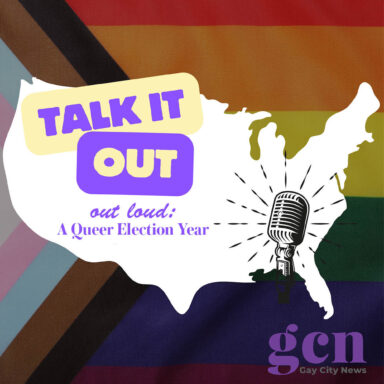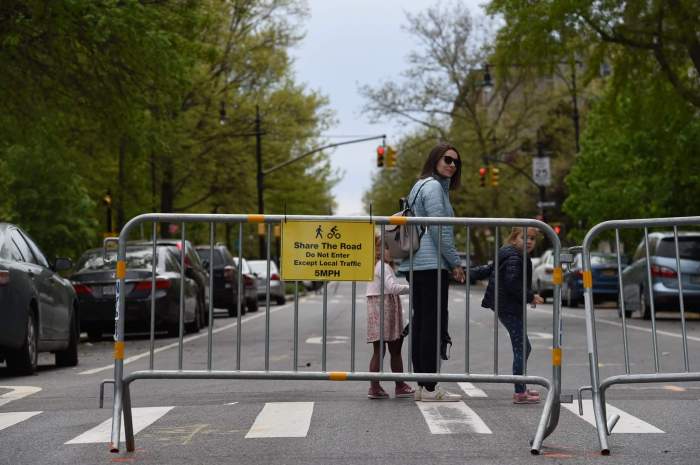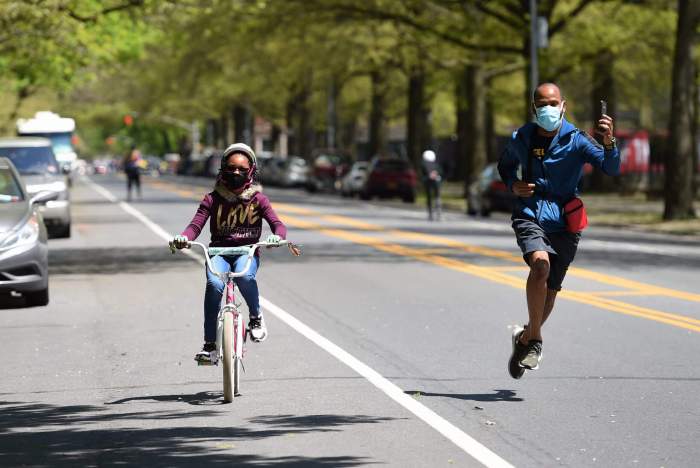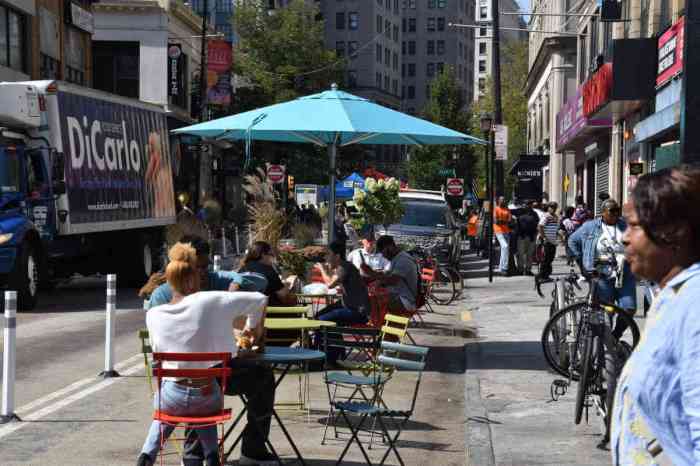Every Saturday from last July to December, Mark and Joanna of the Fifth Avenue Business Improvement District schlepped the blue wooden barriers into the intersections of Fifth Avenue in Brooklyn to let cars know the street was closed to them. And in doing so, they opened the streets to everyone else.
The Fifth Avenue Open Streets — and others like it around the city — give New Yorkers a safe way to gather outside their homes, a new public realm where we can walk, bike, scoot, play, and sit. They provide a lifeline to restaurants and bars that can now offer outdoor seating, a boost to retail, and makeshift spaces to perform, helping to set the stage for the Open Culture program.
To prepare for the renewal of Open Streets this spring, the Fifth Avenue BID ran a GoFundMe campaign to ensure it wouldn’t just be Joanna and Mark hauling the blue barriers and pacing up and down the avenue. They happily raised $55,000 so far, enough to staff up — and, with the BID’s commitment to invest from its own budget to cover any shortfall, these funds may expand Open Streets to Sundays from July to September as well.
While this sounds like a happy ending, there’s a problem in this story: the city’s lack of leadership and investment in a public good. The city has allowed these Open Streets to exist — but moving forward the city can do more to create, preserve, and support them, and protect the community members volunteering to help them succeed.
First off, the city should invest financially. Every time you sing the praises of a successful GoFundMe for a public space, you’re also actually whispering about a lack of public investment. (The same is true of medical bill fundraisers which should be made obsolete by single-payer health care.) It’s great that the Fifth Avenue BID was able to raise the funds, presumably mostly from Park Slope neighbors. But most communities citywide, especially those suffering from congestion and lack of quality open space, don’t have the organizational infrastructure or local fundraising capacity to achieve this.
We’ve seen this play out over the years where some parks have well-heeled “friends of” groups and others fall into disrepair, or in schools where some PTAs can fund teaching aides or Chromebooks and other schools have no arts, music or science programs. When we rely on the ability to conduct local fundraising, we exacerbate inequities—meaning some neighborhoods can afford Open Streets and some cannot.
Add in that it required the incredible capacity of the Fifth Avenue BID. If your neighborhood doesn’t have a civic or business association, it’s harder to do this work — or you may have an association that’s overwhelmed with other challenges from vacant storefronts to traffic fatalities to food insecurity.
Second, right now, neighborhood organizations and individual businesses are working without certainty. Will the rules change in a few weeks or a few months for outdoor dining? Will Open Streets have consistent days and hours — will they be able to continue into the fall? Into next year? While most Open Streets have moved beyond the pop-up feel of last summer, they still live in the unknown — which affects how they invest resources and their ability to plan long-term.
Throughout my work in parks, open space, culture, block associations, parent organizing, and more, I’ve always sought to invest in the commons — creating the physical and virtual spaces where we gather, where we find life beyond our homes, find life and joy and connection in the public realm, and have the opportunities to build community connections and create social capital. To me, this energy is critical for the success of our city — and the Open Streets model a tremendous opportunity.
Now that City Council has taken a welcome step of making these Open Streets permanent, we need to make sure we invest in them in ways that help them become vibrant, safe, equitable, and consistent.
In my campaign for City Council in the 39th District, I’ve made a commitment to invest in and advocate for permanent Open Streets across the district. This, along with neighborhood networks of protected bike lanes, piloting pedestrian-first zones that allow residential blocks to expand open space, making a commitment to our restaurants and bars around outdoor dining, expansion of Open Culture, and increase deployment of Play Streets around schools, can all make a real difference. But if we want to make sure this type of success thrives beyond a handful of examples and flourishes citywide, we need to invest in the projects that are working, give longer commitments to the folks making it happen, bolster existing civic associations and seed more, and map the real needs and opportunities city wide.
In the meantime, we owe our thanks to all the Marks and Joannas around the city who are opening our streets, brightening our Saturdays, and helping us reclaim our city.
Justin Krebs is National Director of Campaigns at MoveOn, a member of the PS39 Parents Association, and a candidate for the City Council’s 39th district.























